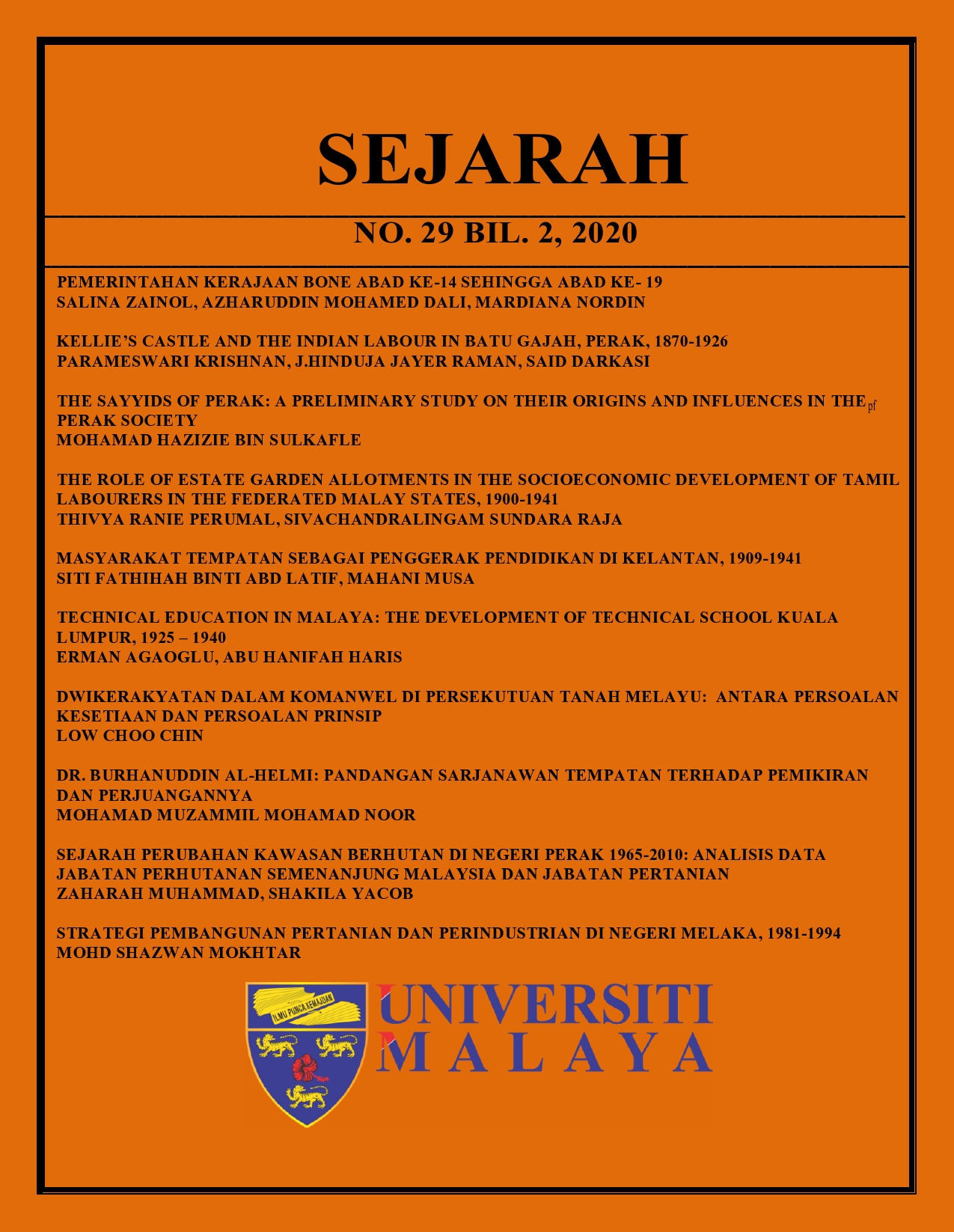STRATEGI PEMBANGUNAN PERTANIAN DAN PERINDUSTRIAN DI NEGERI MELAKA, 1981-1994
THE AGRICULTURE AND INDUSTRIAL DEVELOPMENT STRATEGY IN STATE OF MELAKA, 1981-1994
DOI:
https://doi.org/10.22452/sejarah.vol29no2.10Keywords:
Economic history, Socio-economic Transformation, NEP, Government Policy, Rural SocietyAbstract
This article constructs the State Government of Melaka development policies during the implementation of the Fourth Malaysia Plan (RMK-4) within the year 1891 to 1985. It is centre on the development strategies in agriculture and industrial sectors in developing the society socio-economic and abandons the state sleepy hollow’s satire. The achievement of this effort evaluated based on Melaka’s Gross Domestic Product (GDP) that increased to 47 per cent in 1990 compared to 1985. However, the correlation between the state government’s development strategy and the community social indicator still are not studied in detail. Thus, the research problem solved by analyzing the development of agricultural and industrial development strategies and their impact on the socio-economic development in Melaka. The qualitative research methodology used by analyzing archival and state government documents to constructs the economic phenomenon that occurred during the period. Besides, extracts from ‘Suara Melaka’, which is the state government’s official newspaper, are also used to illustrate a precise implementation of development strategies to the public. The study found that the Melaka Government’s development strategy influenced by the New Economic Policy (NEP) in order to develop the rural socio-economic status. The Government gave focus on the agricultural sector due to her population’s dependence on it as a source of income. Also, the industrial sector slows growth since the 1970s has made the agriculture sector as a significant sector, until the rapid industrial development in 1990s. The direct impact of the development strategies for these sectors on the socio-economic development is the employment opportunities and the side income production for the rural society.
Received: 30 April 2020
Reviewed: 30 April 2020
Accepted: 8 October 2020


